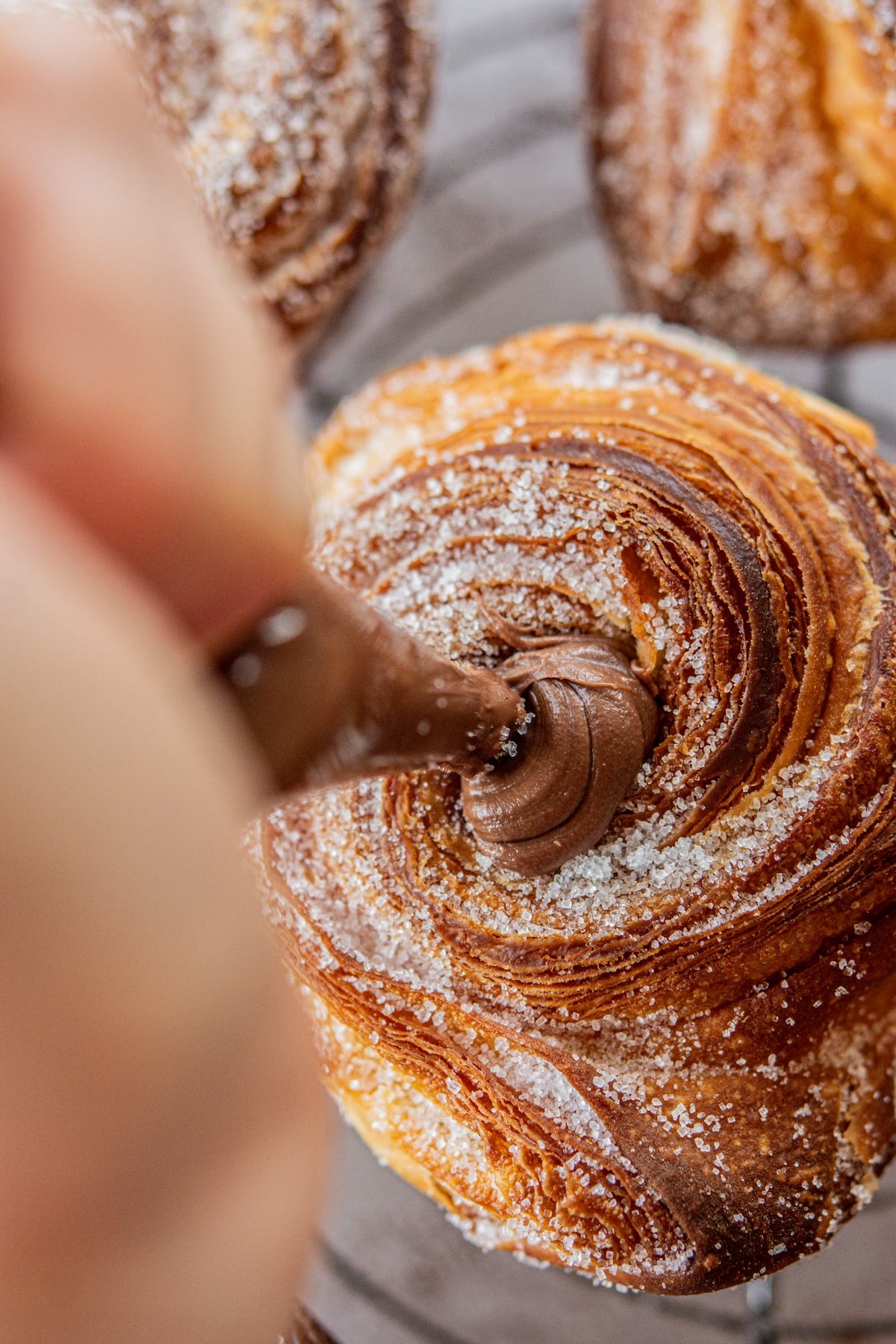How To Make Cruffins
Have you ever had a cruffin? They’re a hybrid of a croissant and a muffin. You make croissant dough and let it rise in a muffin pan. Then, once baked, you’ve got these cute muffin-shaped pastries tossed in sugar and perfect for stuffing with different fillings like lemon curd, jam, chocolate ganache or Nutella. I love them with lemon curd, though they’re great plain too, or tossed in cinnamon-sugar.
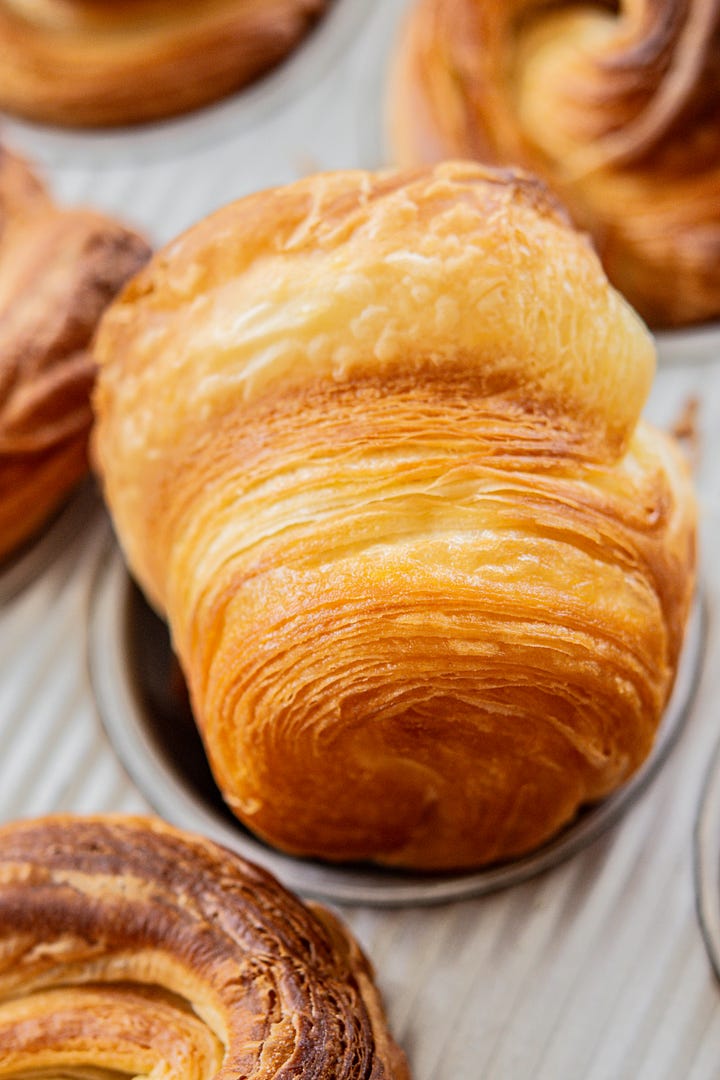
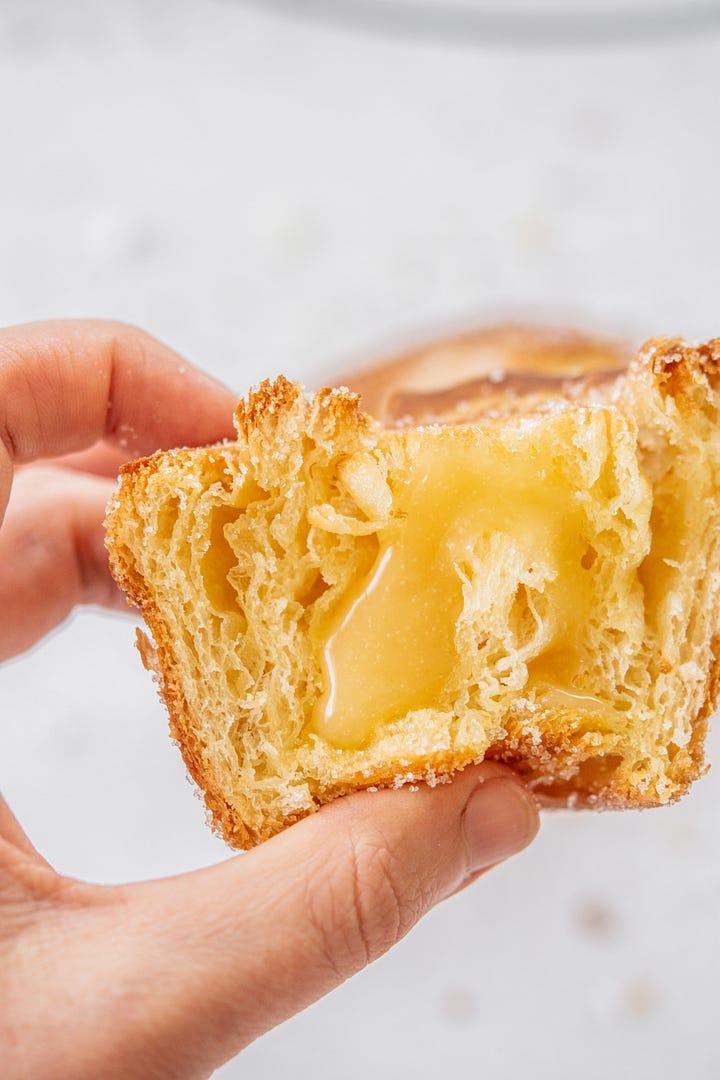
In today’s substack, I am sharing how to make them! Making laminated dough takes some practice and precision, but honestly, even if your layers aren’t perfect, it’ll taste good.
I make the first part of the cruffins, the dough part, the day before and chill it overnight. During the initial mixing and kneading, gluten is developed in the dough, which makes it elastic. While this is needed for structure, too much elasticity causes the dough to shrink back when rolling it out. Chilling the dough overnight lets the gluten relax and makes it much easier to handle during the lamination process.
Any laminated dough is best made in an environment where the temperature is not too hot. The trick to flaky layers is to keep the butter cool as it is rolled into the dough. If it melts into the dough, it won’t be laminated correctly. If your room temperature gets hotter than 25°C / 77 °F, you will struggle to keep the dough and butter cool.
Homemade Cruffins
You can find the printable recipe for these cruffins here.
Dough
2.25 teaspoons instant yeast or active dry yeast
160g (2/3 cup) whole milk, lukewarm
120g (1/2 cup) water
470g (3.75 cups) all-purpose flour, plus extra for dusting
50g (1/4 cup) granulated sugar
1.5 teaspoons salt
30g (2 Tbsp) unsalted butter, room temperature
Butter block
250g (18 Tbsp) unsalted butter, room temperature
1.5 tbsp all-purpose flour
Topping and filling
Granulated sugar or superfine sugar
Lemon curd, jam, nutella….
Method
The dough
In a large bowl add the milk, water, yeast and sugar. If using active dry yeast, let it sit for 5-10 minutes until frothy. Skip this step if using instant yeast.
Add the flour and salt and combine until a rough dough forms.
Turn the dough onto a lightly floured surface and begin kneading. Work the dough for about 3 minutes to start developing the gluten. The dough should become smoother and less sticky.
Once the gluten has begun to develop, add the 30g of room-temperature butter to the dough. Continue kneading for another few minutes until the butter is fully incorporated.
Shape the dough into a ball, place it in a greased bowl, cover it with plastic wrap or a towel, and let it rise for 1-2 hours or until doubled in size. Once risen, punch down the dough to release air, roll it into a rough rectangle, wrap it in plastic, and refrigerate for at least 30 minutes or overnight.
Butter block
Mix 250g butter with 1 1/2 tbsp flour until combined.
Place the butter between two sheets of parchment paper and roll it into a 20x15cm (8×6 inch) rectangle, about .5 cm (1/4 inch) thick. To get clean, straight edges, fold the edges of the parchment paper around the butter block to create a square frame, then press the butter with the rolling pin to fit neatly into this frame.
Refrigerate the butter block until it’s firm.
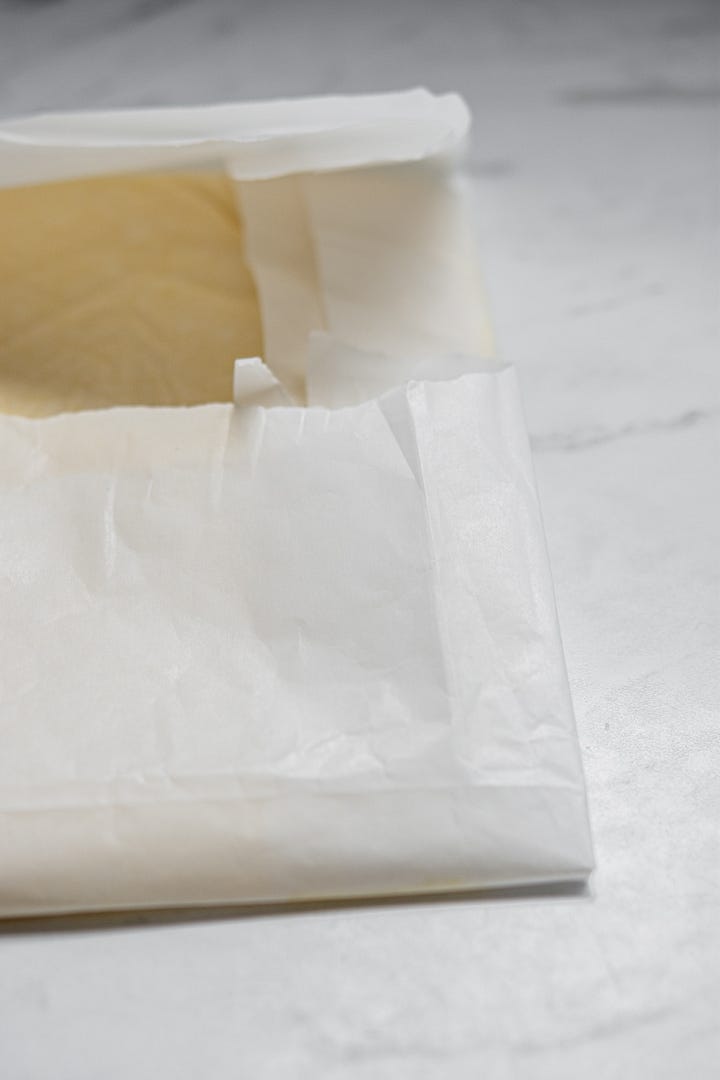
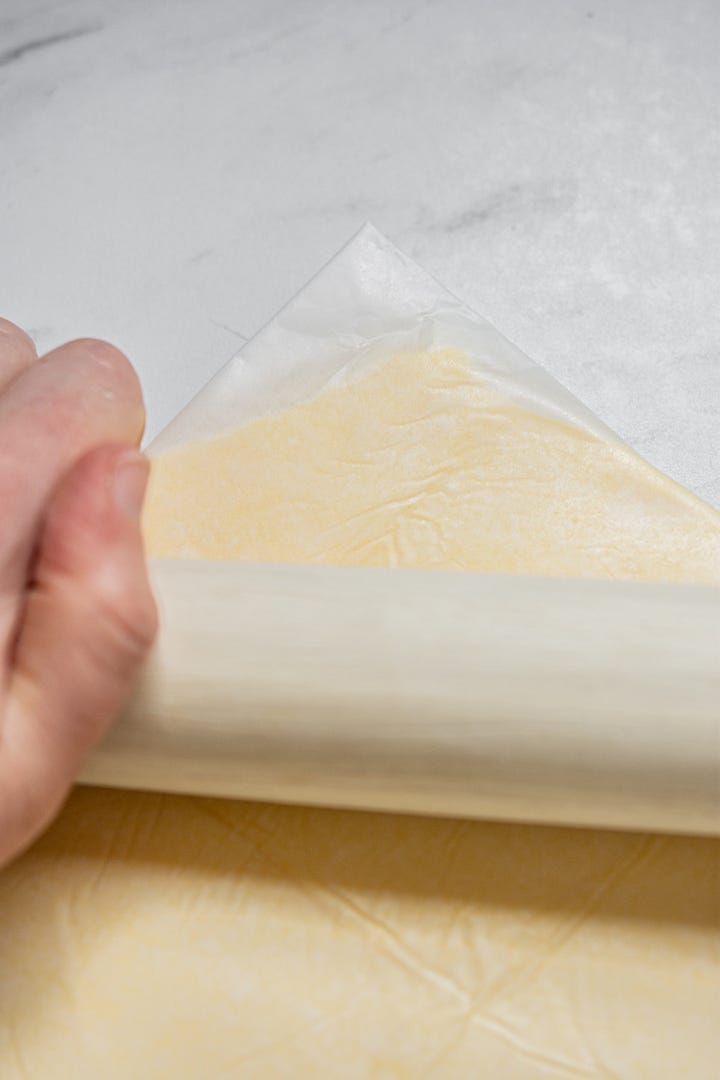
Laminating
Remove your butter block from the fridge and roll it in the parchment paper with the rolling pin to make it pliable and mouldable. It should be cold but be able to be bent a bit.
On a floured surface, roll the chilled dough into a 20×32 cm (8×12.5 inch) rectangle. The dough should be twice the height of the butter and around the same width.
Place the butter block in the center of the dough, folding the top and bottom edges over the butter to fully encase it like a letter. Press this seal closed with your fingertips. Use a sharp knife to make a shallow slit along the long edges of the dough. This helps prevent excessive tension in the dough, especially if it's slightly too tight around the butter block. Turn it 90 degrees so the crease where you encased it is vertically in front of you.
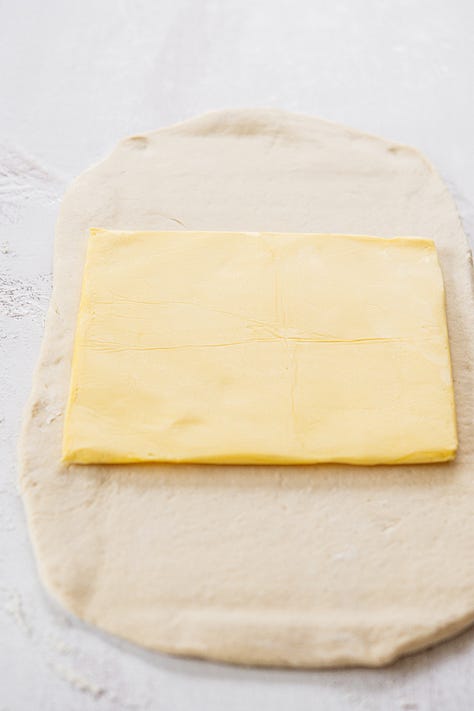
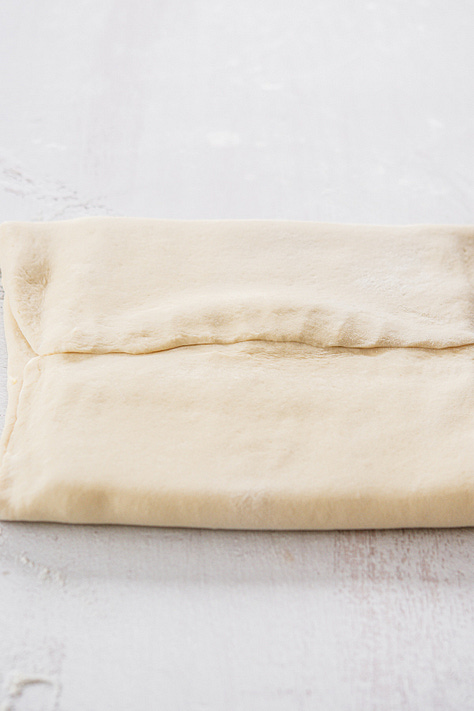

First fold: Applying gentle pressure, roll the dough into a long rectangle about 6mm thick. Don't worry about how wide it is. Always roll forward with gentle, even pressure and focus on length, not width. Avoid pushing too hard, which can tear the dough and crack the butter layers. Ensure the dough is not sticking to the bench, and dust with more flour if needed.
Once rolled, brush away excess flour on the dough. Neaten up the top and bottom edges by cutting off any uneven bits. Fold the top third of the dough down and the bottom third up, like folding a pamphlet. Wrap in plastic, and refrigerate for 30-60 minutes.
Second fold: Place the dough vertically in front of you. Repeat the rolling process as before. Cut off scraggly or uneven bits of dough to maintain clean, sharp edges. Fold into thirds, turn, wrap, and refrigerate for 30-60 minutes.
Third fold: Repeat the folding process again, then refrigerate for at least 2 hours.
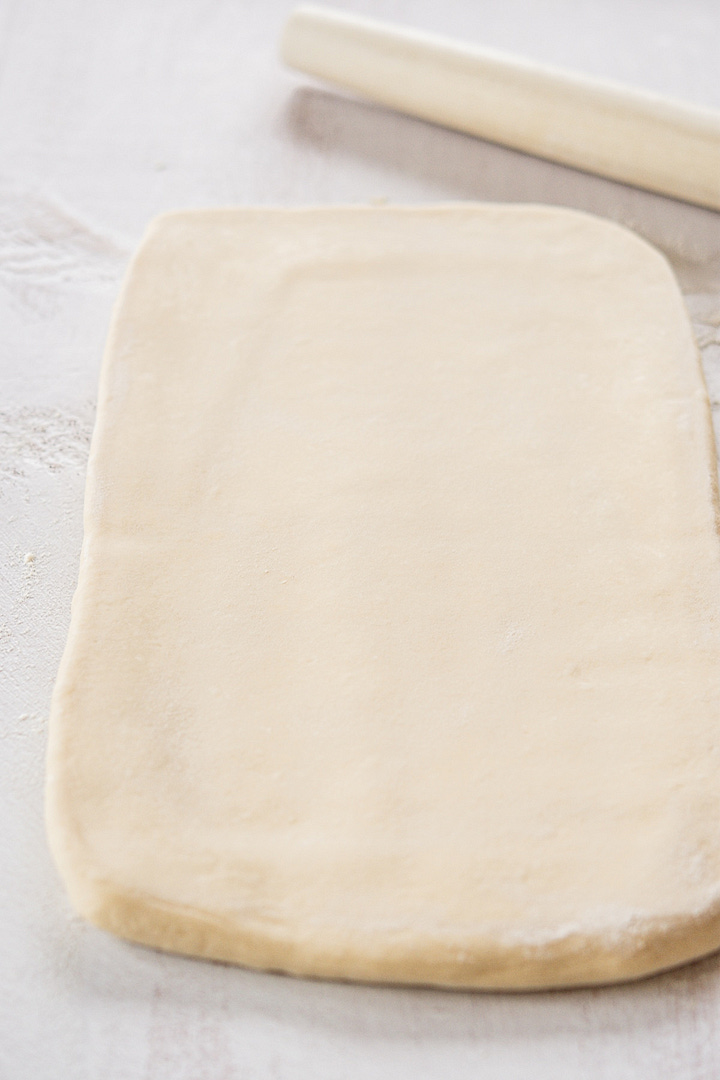
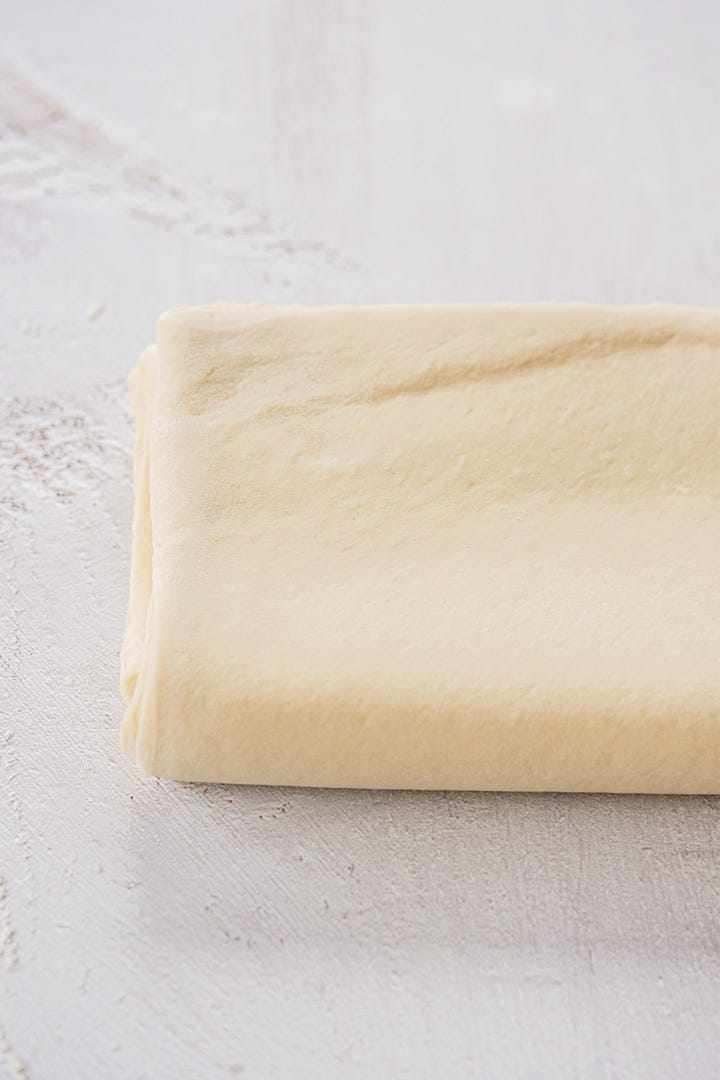
Shaping
Once the dough has chilled, roll it into a large rectangle, approximately 30cm x 35cm (12×14 inch). Cut the dough in half lengthwise to create two long strips, each measuring 15×35 cm (6×14 inch).
Cut the dough horizontally 6 times to create 14 strips, each measuring approximately 5x15cm (2×6 inches).
Take one strip and cut it lengthwise down the middle to create two thinner pieces, each around 2.5cm (1 inch) wide.
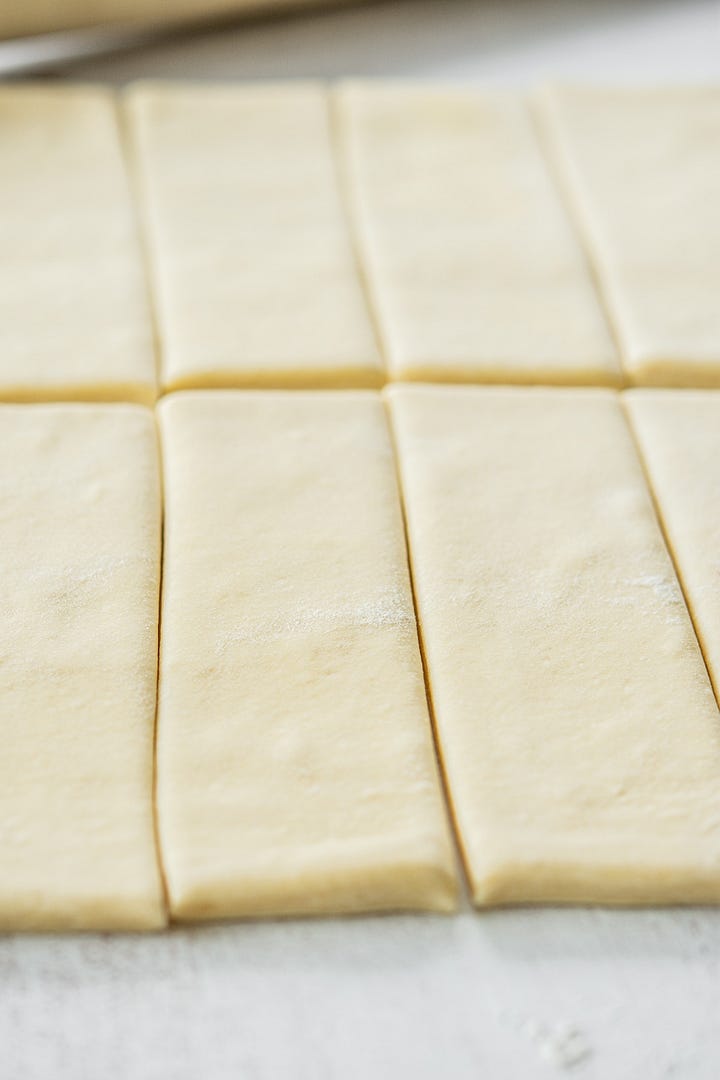
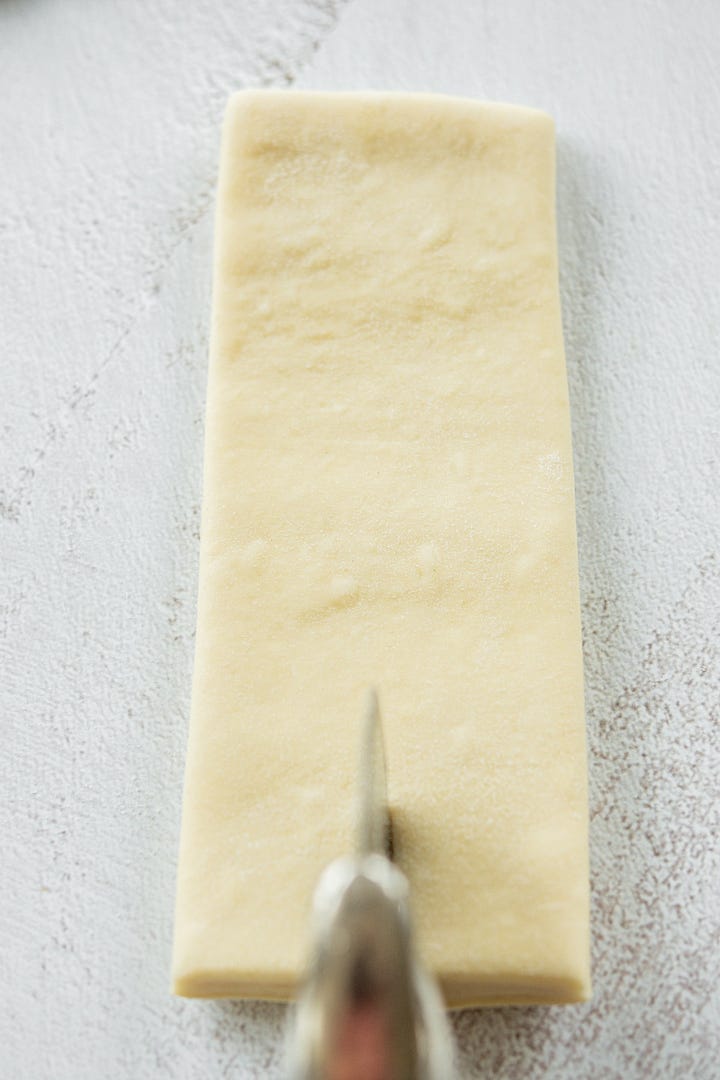
Take two strips and lay them horizontally next to each other. Overlap the ends by around 1/2cm (1/4 inch) to create one long strip. Then, beginning from the centre, roll it up into a coil.
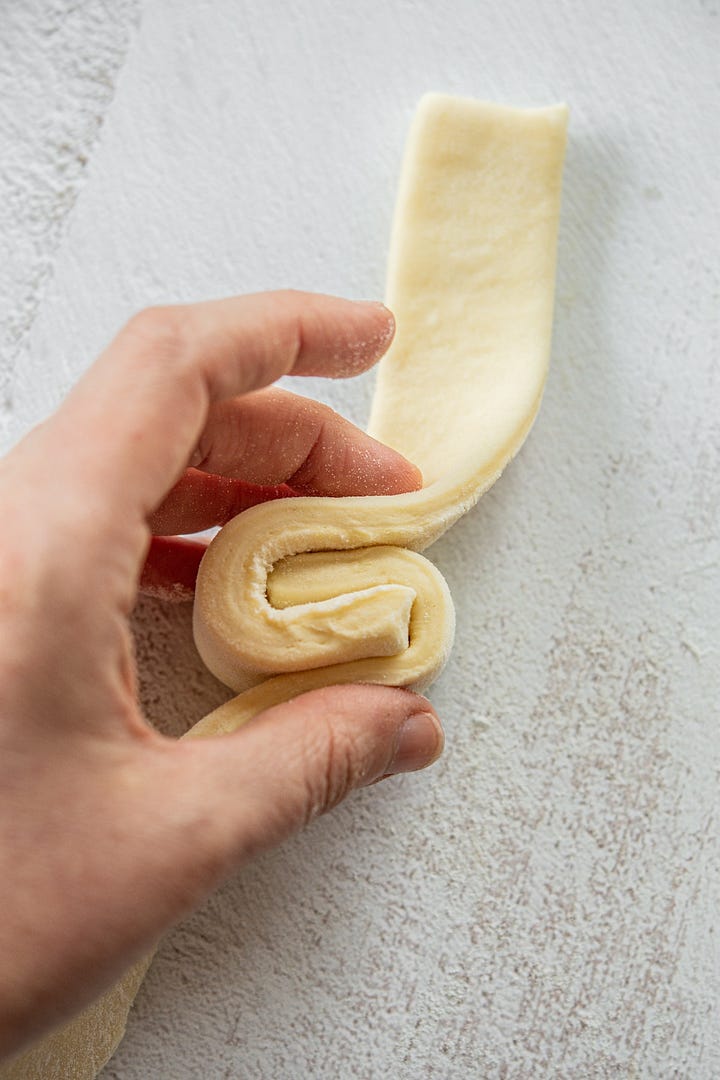

Place the rolled dough into a muffin pan so the spiralled layers are visible at the top. Let them rise for around 2 hours until doubled in size. The timing will depend on your room temperature.
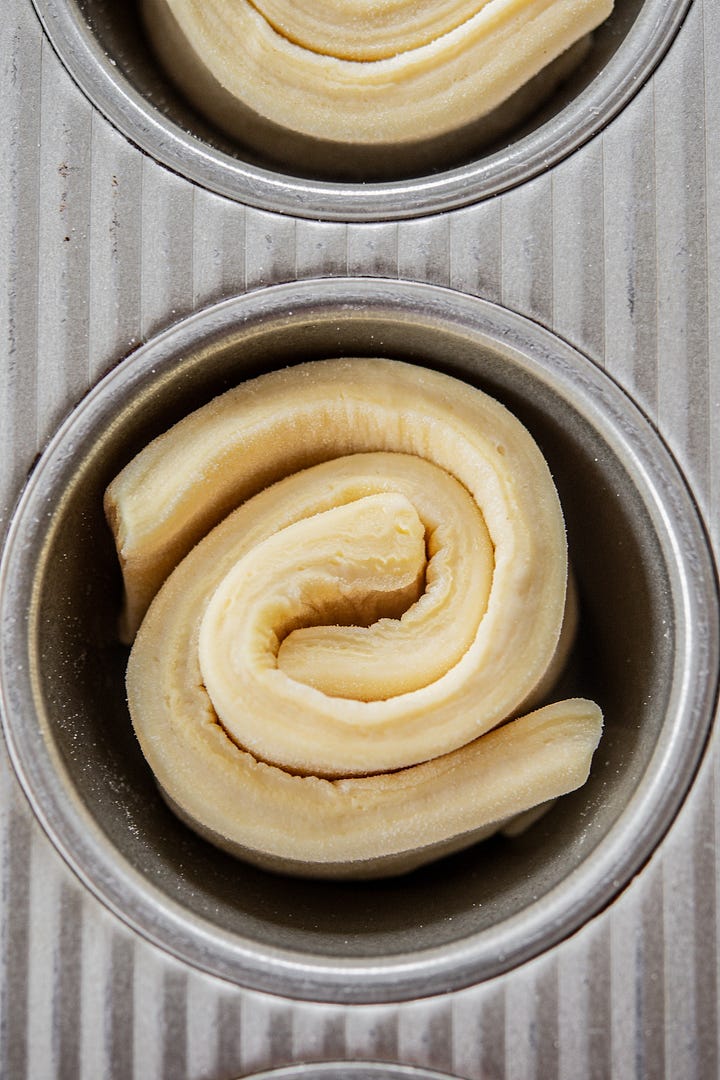
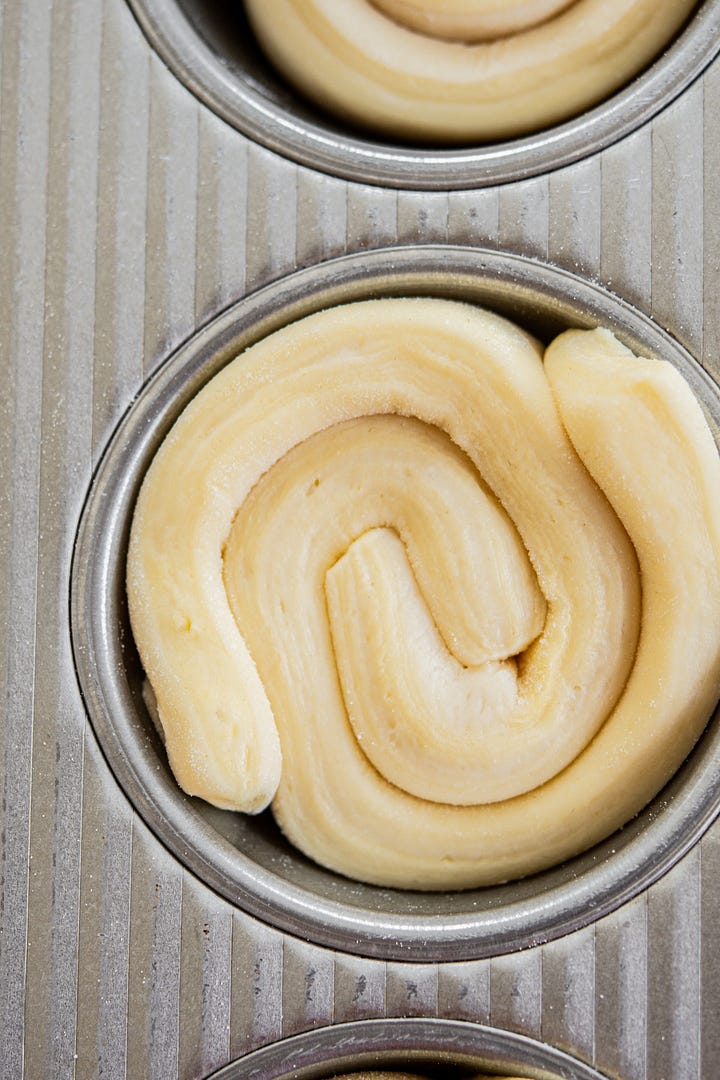
Preheat the oven to 200°C/400°F.
Place the cruffins in the oven and bake for about 20-25 minutes until they’re deep golden brown.
Let the cruffins cool in the pan for a few minutes before removing them and rolling in sugar. Once they are completely cooled, insert a knife into the middle to create a small hole and then pipe in your favourite fillings.
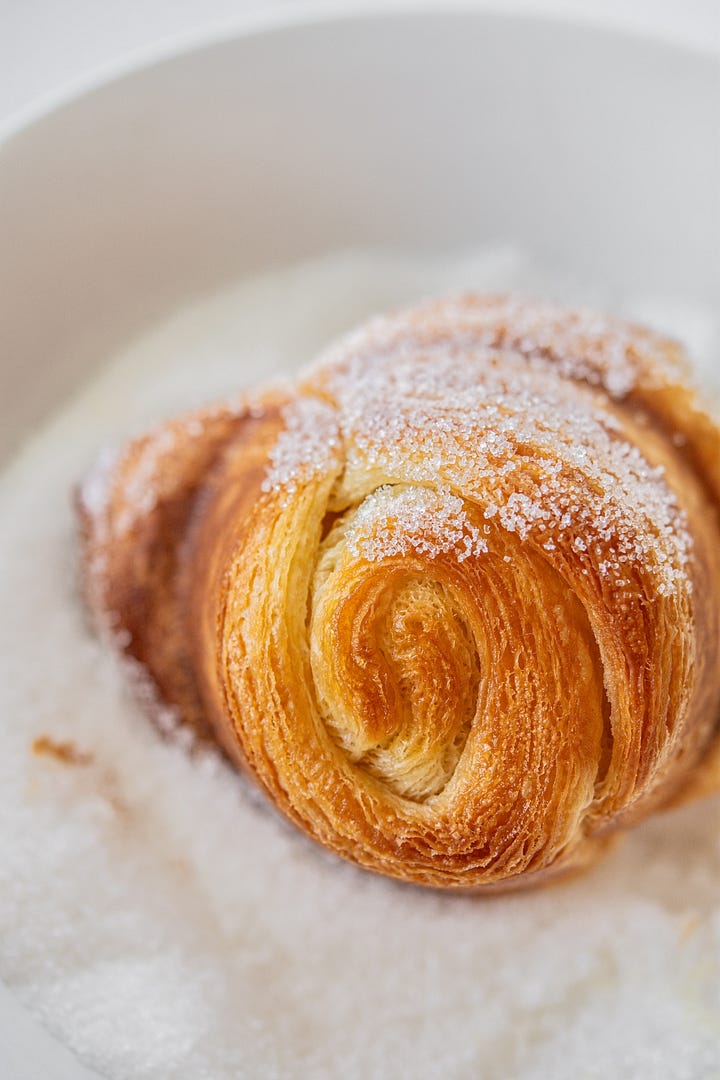

Top Tips
Here are my top tips for laminated dough!
High-quality butter (European-style butter) with a higher fat content (82% or more) is ideal for laminated pastries. It has less water and more fat, which results in better layers and flakiness. In New Zealand we are really lucky because all our butter is quite high quality.
The butter and dough need to stay cold to prevent the butter from melting into the dough. Always chill the dough after every fold (about 30 minutes to an hour) and after laminating to ensure the butter remains intact between the layers.
When rolling the dough, ensure it doesn’t stick to the bench and can move freely. Brush away any excess flour when folding the layers.
Lamination is easier in a cool kitchen. The dough can become greasy and lose its structure if the butter starts softening or melting. If the room is too warm, pop the dough in the fridge as many times as you need to, to keep it cold.
Cut off scraggly or uneven bits of dough to maintain clean, sharp edges. Clean edges help ensure that the layers stay neat and even.
Let the cruffins proof long enough so they’re properly doubled, but make sure that it’s not a too warm place that the butter melts!
Happy baking!



